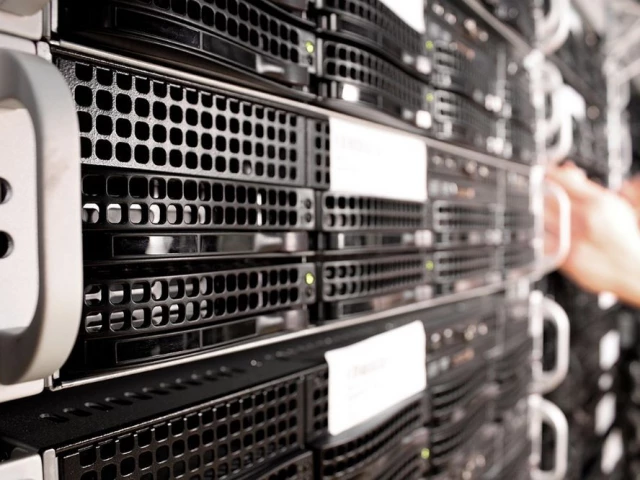AI and cloud boom spark ‘climate strategy crisis’ for tech giants
Campaigners fear data center energy use may derail Big Tech’s 2030 net-zero goals as AI demand surges across the US

The fast-rising energy demands of Big Tech are undermining the ambitious climate pledges that Apple, Amazon, Google, Meta, and Microsoft have all made in recent years, according to a report from the nonprofit NewClimate Institute.
The research says the tech sector faces a "climate strategy crisis" as its data centers demand ever more electricity and water to power growing fields such as artificial intelligence (AI) and cloud computing.
"These companies seem to have lost their way with regard to climate strategies," report co-author Thomas Day told the Thomson Reuters Foundation by phone. "The narrative has changed from 'we're fixed on the target' to 'we're really not sure, but we'll get there somehow.'"
The picture is further complicated, he said, by ongoing negotiations over how to count and report future emissions. Big Tech has pledged to fight climate change and says it is striving to be sustainable in all aspects of its business.
Day pointed to Microsoft, which in February described its 2020 sustainability goals as a "moonshot." The company later noted: "We have had to acknowledge that the moon has gotten further away." The report found that Microsoft’s electricity demand has tripled since 2020 as it invested in massive warehouses housing the computer systems that power services like photo storage, music streaming, and AI chatbot interactions. Microsoft declined to comment.
Data hubs
The proliferation of data centers has surged in recent years. North America housed fewer than 1,500 in 2014; by 2024, the United States alone had more than 5,400, according to Statista. Their average size and power usage have also increased.
Although nearly all major tech firms have pledged to reach net zero by 2030, environmental campaigners fear their growing dependence on data centers will derail those ambitions due to surging energy and water consumption. With AI projected to consume around 12% of U.S. energy by the decade’s end, according to consultancy McKinsey, the transition from fossil fuels to clean energy is growing more difficult.
Growing gap
Based on publicly available information, the NewClimate report outlines a dramatic increase in emissions among Big Tech firms, with only minor adjustments to their sustainability strategies. Many of the plans fall short of addressing total emissions, often tackling only about half of projected figures. Vague accounting makes this gap hard to assess, the report said.
Meta’s emissions have more than doubled since 2019, and Amazon’s have nearly done so. However, Amazon’s pledge to be net zero by 2040 omits large portions of its business and relies heavily on market-based offsets such as carbon credits. Moreover, companies like Meta and Microsoft do not count third-party data center operations in their emissions tallies, even though they contract out significant portions of their infrastructure.
Apple and Google did not respond to requests for comment. Meta declined to comment on the report, though a spokesperson said the company reports transparently on emissions and energy use, citing a 2024 blog post on its energy strategy.
Amazon, meanwhile, disputed the report, saying it "mischaracterizes our data and makes inaccurate assumptions throughout—its own disclaimer even acknowledges NCI cannot guarantee its factual accuracy." Amazon added, “We have a proven, independently audited, seven-year track record of transparently delivering facts that follow global reporting standards.”
The company described AI as a transformative technology driving energy demand across all sectors, and listed a variety of sustainability initiatives, including efficient delivery routes, lower water use, and eliminating plastic packaging. "We’re excited about what’s ahead and will continue to share our progress openly," Amazon said in a statement.
New Climate's report also raises broader concerns about Big Tech's influence on the wider digital economy, said Nick Dyer-Witheford, a professor of information and media studies at the University of Western Ontario. He pointed to the carbon impact of global online activity such as targeted advertising, e-commerce, and influencer-driven consumerism.
"It is the role of giant digital corporations in sustaining a global regime of ceaseless production and hyper-consumption that needs attention," he said.
AI’s energy hunger
In the United States, over half of the 5,400 data centers operating in March ran on fossil fuels, according to the Environmental and Energy Study Institute. From 2017 to 2024, energy demand from data centers rose 12%, and the International Energy Agency expects it to double again by 2030.
Nearly half of that future demand will come from AI-driven data centers. This could force power utilities and grid operators to adapt rapidly, said Anurag K. Srivastava, a computer science professor at West Virginia University.
AI usage is expected to fluctuate rapidly, based on time of day or sudden surges tied to viral trends, Srivastava said. “Gas is one [source of energy] that can ramp up and down quickly—you can’t do that with nuclear or others,” he explained. “Solar can be done the same way, but only if it’s located there,” he added, noting that large storage batteries could help.
That flexibility comes with environmental and financial costs for local communities, Srivastava warned. “Whatever the ramp-up in power looks like, it will unfold at unprecedented speed,” he said. “The rate of load change is probably one of the fastest we have seen.”



















COMMENTS
Comments are moderated and generally will be posted if they are on-topic and not abusive.
For more information, please see our Comments FAQ